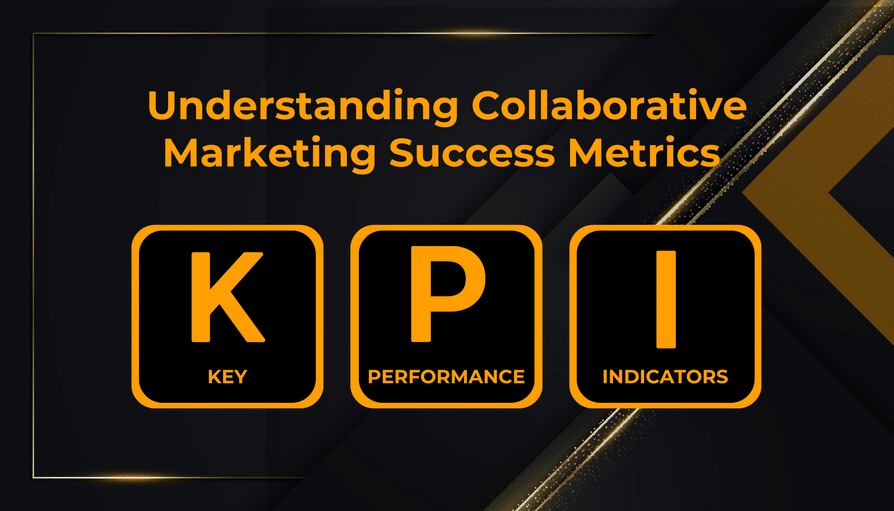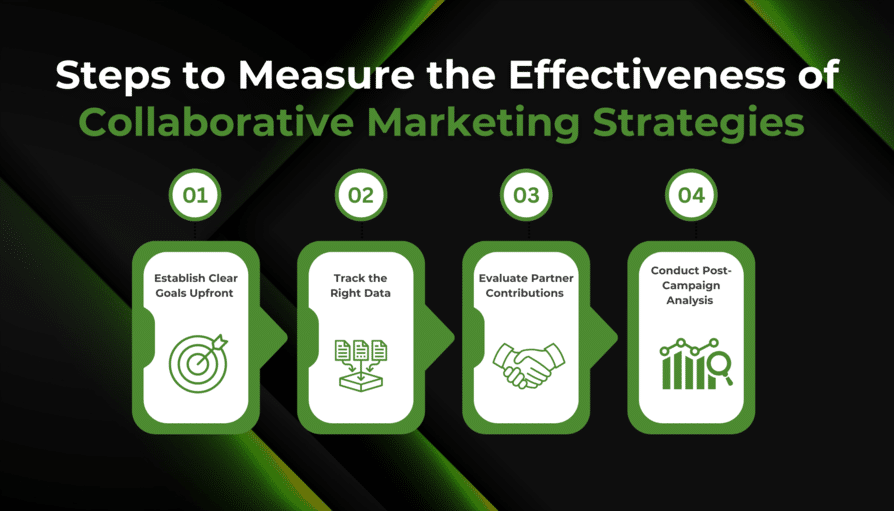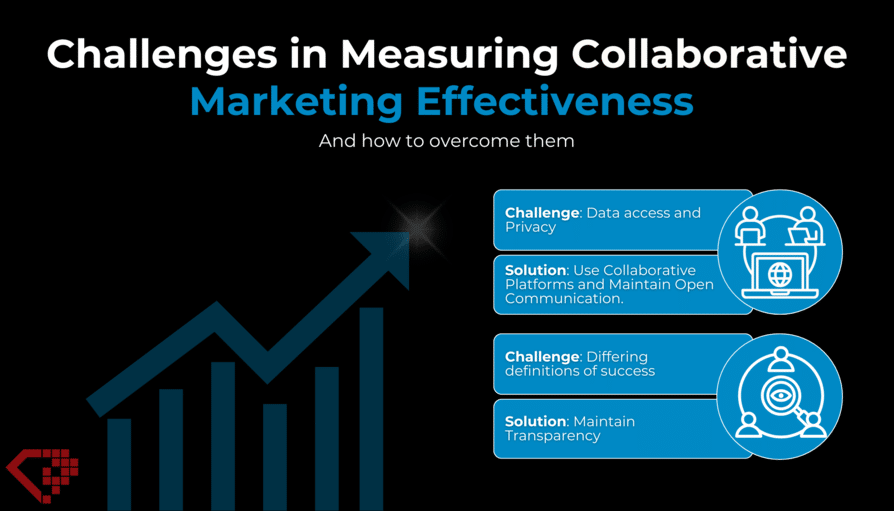Collaborative marketing functions as a strategic partnership, much like a team sport for businesses. It is the process of aligning your in-house team with a digital agency to pursue common marketing objectives.
This partnership may include co-creating content, running joint promotions, or collaborating on social media campaigns. By combining your internal knowledge and resources with the agency’s expertise and specialised skills, you can amplify your reach, engage new audiences, and achieve greater results than you could alone.
This blog will explore how to measure the success of your collaborative marketing strategies with an agency. We will discuss essential metrics, best practices, and potential challenges to optimise the benefits of such partnerships.
Understanding Collaborative Marketing Success Metrics
Key Performance Indicators (KPIs)
Before diving into any marketing campaign, establish clear and measurable objectives. What do you hope to achieve through this collaboration? Are you aiming to drive sales, boost engagement, or increase brand awareness?
Once you have defined your goals, you can identify the key performance indicators (KPIs) that will help you track your progress.

Some common KPIs for collaborative marketing include:
- Website traffic: The number of visitors (both new and returning) to your website. You can track this with tools like Google Analytics.
- Social media engagement: How much your audience is interacting with your content on social media. Look at likes, shares, comments, and mentions to gauge the level of interaction generated by your collaborative efforts. Most social media platforms provide built-in analytics to track these metrics.
- Lead generation and sales conversions: One of the primary goals of marketing is usually to generate leads and convert them into paying customers. Track the number of leads generated, conversion rates, and the overall sales revenue attributed to your collaborative campaign. Conversion tracking tools like our very own RubyLeads make this simple.
- Return on investment (ROI): This is a crucial metric that measures the profitability of your marketing investment. Calculate your ROI by comparing the revenue generated from your campaign to the costs incurred.
- Brand awareness and reach: How many people are becoming aware of your brand through the collaborative campaign? You can track impressions, reach, and brand mentions across various channels to gauge the overall impact on brand visibility.
- Content performance: If your collaborative campaign involves content creation (like blog posts, videos, and infographics), track metrics like page views and social shares to assess its reach and engagement.
- Customer satisfaction and feedback: Gather feedback from customers who engaged with your collaborative campaign through surveys or reviews to understand their experience and identify areas for improvement.
Short-Term vs. Long-Term Metrics
Short-term metrics, such as website traffic, PPC advertising returns, or social media engagement, can give you an immediate sense of how your campaign is performing. Long-term metrics measure the lasting impact of your collaborative strategies. These might include brand loyalty, customer lifetime value, results from SEO campaigns, or overall market positioning.
Steps to Measure the Effectiveness of Collaborative Marketing Strategies
Step 1: Establish Clear Goals Upfront
Ensure that both you and your partner agency are aligned on your objectives. This might involve:
- Defining your target audience
- Setting specific goals (e.g., a percentage increase in sales or a target number of leads)
- Establishing a clear timeline for the campaign
Step 2: Track the Right Data
Use tools to track your campaign performance. This might include:
- Google Analytics to monitor website traffic and referral sources
- Social media analytics to track engagement and reach
- CRM systems to monitor lead generation and sales conversions
Step 3: Evaluate Partner Contributions
Assess the contributions and impact of each partner in the collaboration. This might involve:
- Analysing content creation efforts
- Evaluating the reach and effectiveness of different distribution channels
- Tracking the financial contributions of each partner
Step 4: Conduct Post-Campaign Analysis
Once the campaign has ended, review its performance against your objectives. Gather feedback from both your team and your partner agency, as well as from your target audience, to identify areas for improvement and celebrate successes.

Challenges in Measuring Collaborative Marketing Effectiveness
Here are a few potential roadblocks to keep in mind:
- Data access and privacy: You might encounter difficulties accessing shared analytics or insights due to privacy concerns or incompatible tools.
- Differing definitions of success: Partners might have different interpretations of what constitutes a successful campaign, leading to challenges in evaluation.
To overcome these challenges:
- Maintain open communication: Schedule regular check-ins and updates to ensure alignment on goals and performance.
- Use collaborative platforms: Use platforms like Trello, Asana, or HubSpot for instant communication and data sharing.
- Be transparent: Clearly communicate expectations, roles, and performance results throughout the collaboration.

Ruby Digital believes in the power of collaborative marketing. We work with our clients to understand their goals, develop effective strategies, and track performance to ensure mutual success. The results speak for themselves!
Join forces with Ruby Digital and unlock the full potential of collaborative marketing. Let us achieve amazing things together!



